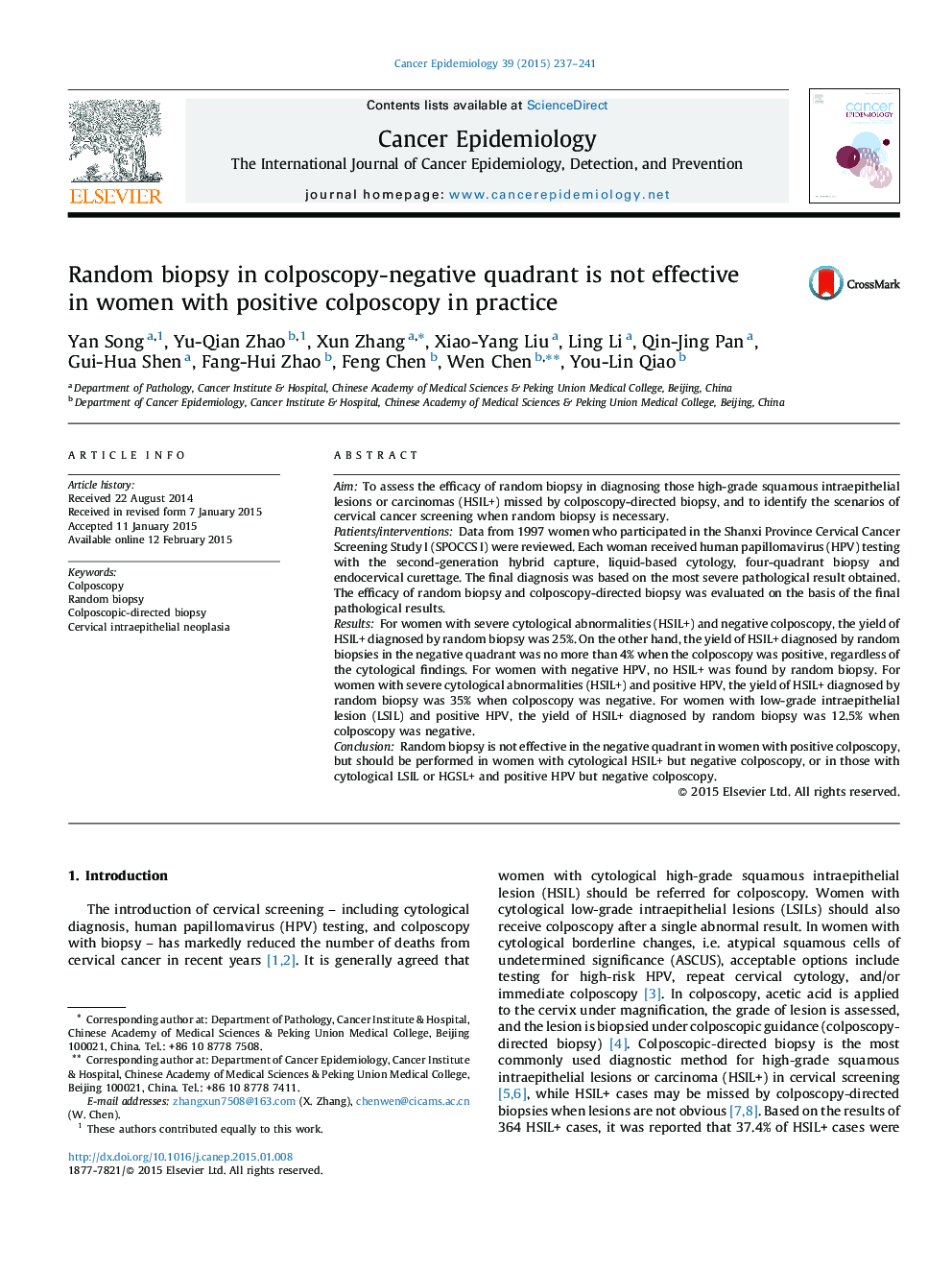| Article ID | Journal | Published Year | Pages | File Type |
|---|---|---|---|---|
| 2108895 | Cancer Epidemiology | 2015 | 5 Pages |
•The only screening study in China all participants received biopsy in every quarter.•The rare opportunity to analyze the efficacy of random biopsy in every quarter.•Giving suggestions about how to perform random biopsy in practice.
AimTo assess the efficacy of random biopsy in diagnosing those high-grade squamous intraepithelial lesions or carcinomas (HSIL+) missed by colposcopy-directed biopsy, and to identify the scenarios of cervical cancer screening when random biopsy is necessary.Patients/interventionsData from 1997 women who participated in the Shanxi Province Cervical Cancer Screening Study I (SPOCCS I) were reviewed. Each woman received human papillomavirus (HPV) testing with the second-generation hybrid capture, liquid-based cytology, four-quadrant biopsy and endocervical curettage. The final diagnosis was based on the most severe pathological result obtained. The efficacy of random biopsy and colposcopy-directed biopsy was evaluated on the basis of the final pathological results.ResultsFor women with severe cytological abnormalities (HSIL+) and negative colposcopy, the yield of HSIL+ diagnosed by random biopsy was 25%. On the other hand, the yield of HSIL+ diagnosed by random biopsies in the negative quadrant was no more than 4% when the colposcopy was positive, regardless of the cytological findings. For women with negative HPV, no HSIL+ was found by random biopsy. For women with severe cytological abnormalities (HSIL+) and positive HPV, the yield of HSIL+ diagnosed by random biopsy was 35% when colposcopy was negative. For women with low-grade intraepithelial lesion (LSIL) and positive HPV, the yield of HSIL+ diagnosed by random biopsy was 12.5% when colposcopy was negative.ConclusionRandom biopsy is not effective in the negative quadrant in women with positive colposcopy, but should be performed in women with cytological HSIL+ but negative colposcopy, or in those with cytological LSIL or HGSL+ and positive HPV but negative colposcopy.
